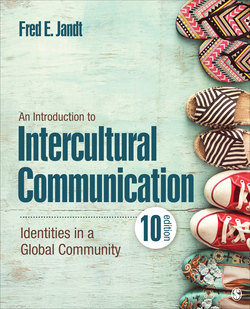Читать книгу An Introduction to Intercultural Communication - Fred E. Jandt - Страница 108
На сайте Литреса книга снята с продажи.
Effect of Culture on Sensing
ОглавлениеHow much alike, then, are two persons’ sensations? Individuals raised in diverse cultures can actually sense the world differently. For example, Marshall H. Segall and his associates (Segall, Campbell, & Herskovits, 1966) found that people who live in forests or in rural areas can sense crooked and slanted lines more accurately than can people who live in urban areas. This demonstrates that the rural and urban groups sense the same event differently as a result of their diverse cultural learnings.
The term Field dependence refers to the degree to which perception of an object is influenced by the background or environment in which it appears. Some people are less likely than others to separate an object from its surrounding environment. When adults in Japan and the United States were shown an animated underwater scene in which one large fish swims among small fish and other marine life, the Japanese described the scene and commented more about the relationships among the objects in the scene. The Americans were more likely to begin with a description of the big fish and make only half as many comments about the relationships among the objects. Not surprisingly, when showed a second scene with the same big fish, the Americans were more likely to recognize the big fish as the same one as in the first scene (Nisbett, 2003).
More recently, Kitayama, Duffy, Kawamura, and Larsen (2003) showed Japanese and European-Americans a picture of a square with a line inside it (see Figure 3.2). The participants were then given an empty square of a different size and asked to draw either a line the same length as the one they had seen or a line of the same relative length to the one they had seen. The European-Americans were significantly more accurate in drawing the line of the same length, while the Japanese were significantly more accurate in drawing the line of relative length. Differences in the environment and culture affected sensation.
Figure 3.2 Stimulus for Culture’s Effect on Sensation
Source: Ishii & Kitayama (2003).
The researchers then compared Americans who had been living in Japan for a few years and Japanese who had been living in the United States for a few years. Given the same picture and task, the Americans who had been living in Japan were close to the Japanese in the original study, while the Japanese who had been living in the United States were virtually the same as the native-born Americans. While other explanations are possible, one strong suggestion is that even living for an extended time in a new culture can modify sensation and cognitive processes.
